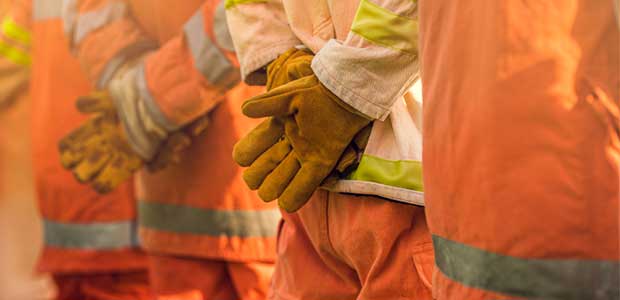
Stories from the Field — Flame-Resistant Clothing
Flame-resistant (FR) clothing is a crucial element in keeping workers safe.
- By M.B. Sutherland
- May 01, 2020
For many industrial environments, flame-resistant (FR) clothing is a crucial element in keeping workers safe. You select protective items with care and take the time to train and remind your workers to keep their PPE in tip-top shape. But unfortunately, there are always a few people who will surprise you with creative thinking and invincible attitudes. We talked with Craig Howell, the Director of Clothing Sales at Magid, about tips he has gathered and stories he has heard in 30-plus years in the protective clothing trenches.
Storage and Care of FR Clothing
Industry standards are very specific when it comes to what garment will protect in a particular environment. Manufacturers are equally specific about how to care for these garments so they maintain their effectiveness. Storage, laundering, repair (if allowed) and many other factors need to be considered in everyday use and care.
Unfortunately, Howell said many workers take their FR clothing for granted and begin to treat it like just another piece of clothing. He said he has found workers with FR garments crumpled in the back of their truck instead of being stored properly. The problem, he explained, is that dirt, grime, and even flammable substances can accumulate on these mistreated garments and compromise their effectiveness.
Not caring for FR clothing “prohibits the garment from doing what it’s designed to do which is resist ignition and self-extinguish upon removal of the source.” He explained that, while a cotton garment would continue to burn even if the person ran away from the flame source, FR garments self-extinguish as you run away. So they don’t make you fireproof, just fire resistant—provided the garment is maintained properly.
“We had a guy who was standing next to a blast furnace when his pantleg caught on fire from the heat. It did not self-extinguish as expected. What we call the afterflame is the amount of time the garment burns when the source has been removed. Normally, it should self-extinguish almost instantaneously,” Howell said. “We took the pants and tested them and found they were doused in accelerant. If an accelerant is on the garment, it continues to burn until the accelerant is gone, which causes a breakdown in the garment.”
“Because of the FR clothing standards and guidelines, we were able to trace that fabric back to the fiber. We went back to the laundry people who traced the garment’s records and they found that they had taken it out of service three months prior. When the employer went back to the employee and confronted him, he admitted he had continued to use the garment against orders because he said it was his favorite pair of pants.”
Use Life of an FR Garment
FR clothing is a big investment, and making it last while ensuring that it continues to protect employees is a huge consideration for safety managers. Howell explained that some companies double-up on clothing by having workers wear their more rugged FR clothing like jeans and work shirts along with an outer FR layer of something like a semi-disposable coverall.
“It’s a good way to extend your investment,” Howell said. “The outer layer is used to protect your (more expensive) FR clothing but isn’t factored into the hazard protection.”
Howell explained that there isn’t always a clear answer to the general question of how long an FR garment can last because a lot depends on the environment in which it’s being used.
“I had a customer using a coverall in a confined space with lead exposure. They asked me when they should discard and replace the coveralls. The manufacturer’s answer is that the FR quality will last for the life of the product—but what’s the life of the product? The tag will tell you that use life will be impacted by the environment. So, if you’re working in a heavy soil environment, it greatly diminishes the amount of time you can use it.”
In the absence of an easy number, Howell said you have to rely on garment inspection. “Wear marks, fraying of the garment, thinning of the garment, obvious rips, tears and holes. Each company is tasked with having guidelines for these things. You need to decide how big a hole can be. Is the size of a dime okay? A nickel? A quarter? What are you willing to live with?”
Howell explained that holes or tears don’t always mean that you have to discard a garment, but any repairs must be done according to FR standards. “If a hole is bigger than your guideline, you have to patch with FR material of the same quality. You have to use the right stuff including FR thread.”
Many companies give their workers several sets of FR clothing to supply workers for an extended period of time. But Howell cautions that it’s a good idea for safety managers to check in with their people to make sure they understand how they’re meant to employ these garments. “They get six sets from the company—five for work and one to spare. Some guys put five in their closet and wear the same one every day, planning to use it until it wears out. Bad idea! You should be wearing a fresh coverall every day and laundering the week’s worn ones at some point.”
Howell said there’s a common expression in protective clothing: “If you take care of your FR clothing, it will take care of you! The care you give your FR, your attentiveness to treating it properly, is a heavy factor in its ability to do what it’s supposed to do!”
This article originally appeared in the May 2020 issue of Occupational Health & Safety.